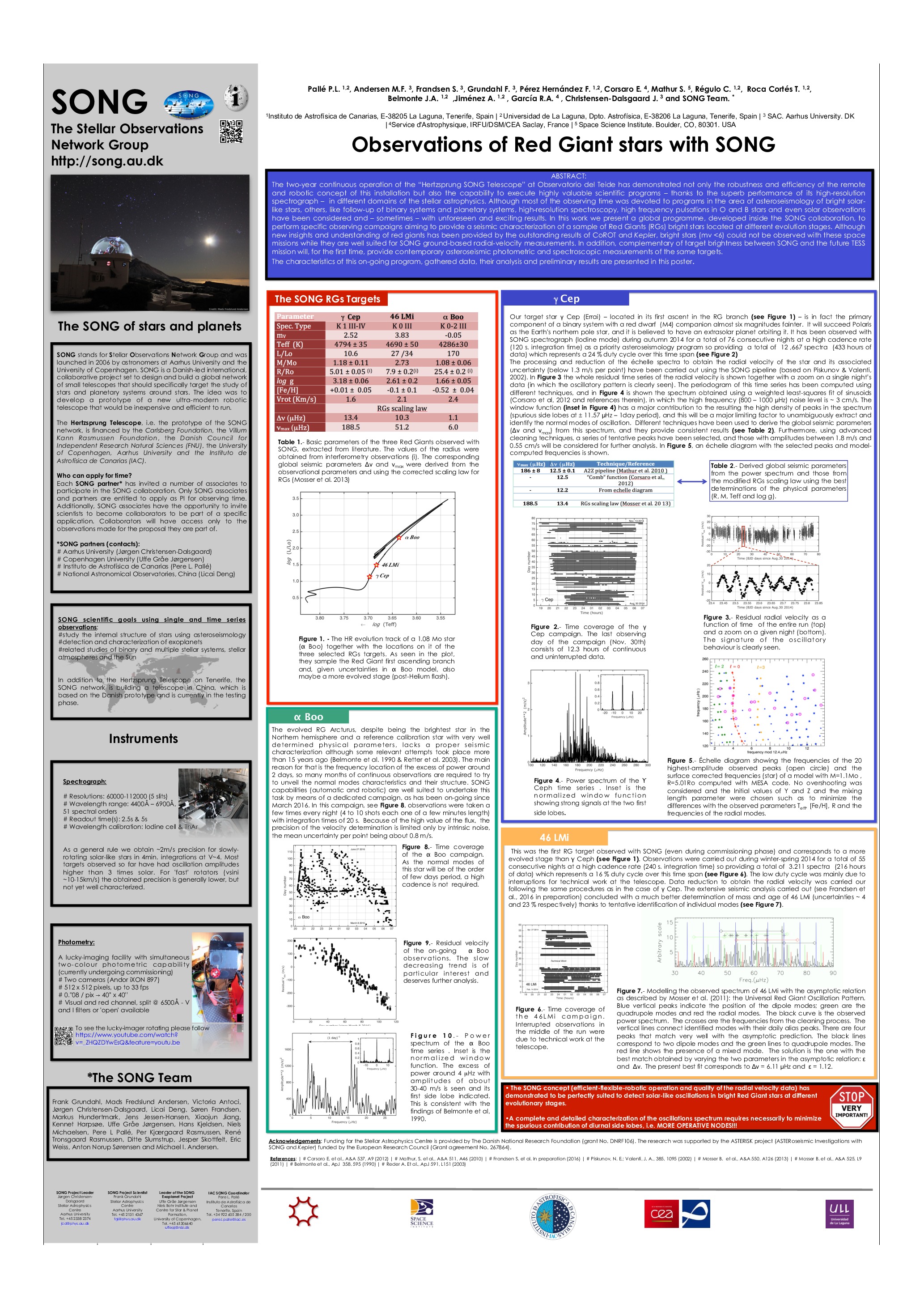Affiliation
Instituto de Astrofisica de Canarias
Main category
Natural Sciences (Astrophysics and Astrononmy)
Abstract
One of the outstanding and unforeseen results from the Kepler mission is our new insight and understanding of red giant stars. These highly evolved stars, which are in the last stages of their life, provide extremely useful information when trying to develop stellar evolutionary models. Furthermore, they show stochastically excited oscillations thus allowing to use asteroseismic techniques to derive conditions of the most internal layers. Bright giants stars are well suited to be studied with the 1m telescopes in the Stellar Observations Network Group project (SONG) using a high resolution echelle spectrograph performing high precision measurements of their the radial velocity. The prototype node- the Hertzsprung SONG telescope- was inaugurated in October 2014 and is located at the Teide Observatory on Tenerife and providing continuous and high quality observations since then, When selecting the best targets for SONG, a precision of 1-2 m/s per point is reachable using the iodine method and a number of red giants have been observed with the SONG telescope since scientific operation started. In this talk we present the first results of these specific campaigns for a few red giants in which eigenmodes have been identified and their global seismic parameters derived.
Do you have problems viewing the pdf-file? Download poster
here
If the poster contains inappropriate content, please
report the poster. You will be redirected to the landing page.
